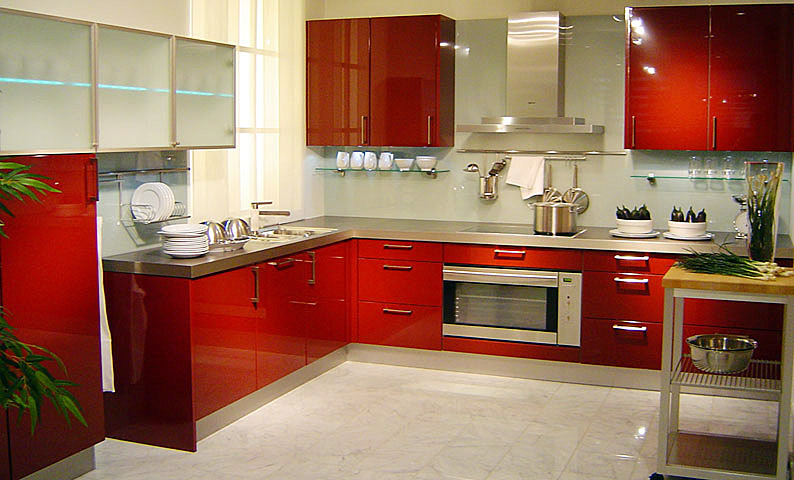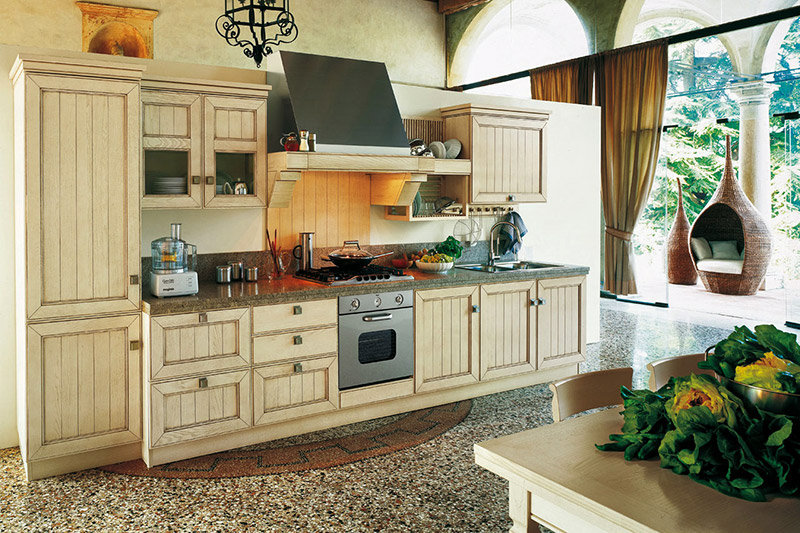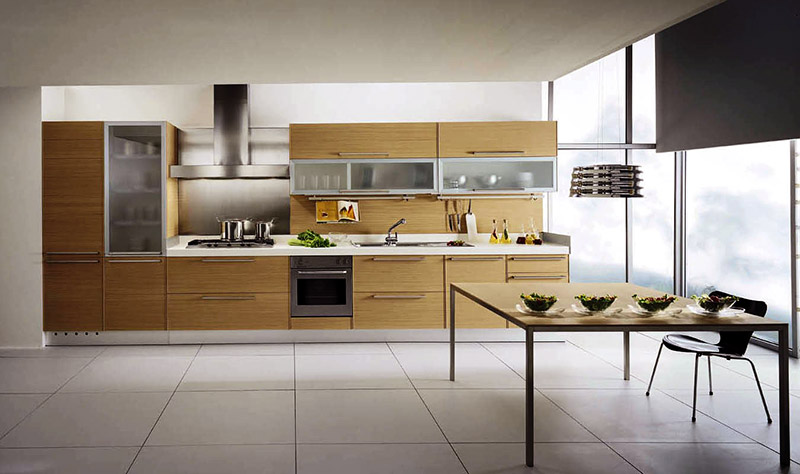Kitchen furniture: standards, problems, tasks
Modern furniture production faces a number of difficulties, including compliance with standard functional dimensions when designing. This contributes to the fact that the operational properties are reduced. Moreover, the standard technology of the cooking process violates, because the surfaces intended for this are not arranged in a standard order.
Not only foreign manufacturers are known for such violations. Domestic furniture factories and workshops are also trying to organize a workplace in the kitchen, which would save space, but so far the standards remain the only correct solution to this problem. For example, you can find kitchens where, in order to save communication devices and equipment, hotel elements are installed in an extremely inconvenient place. Despite the fact that the modern construction market is replete with various extension cords and carriers.

Problems of the kitchen organization
At the same time, there are also such problems in the distribution of kitchen space that it would be worth dealing with in the first place. This is the vertical placement of the gas pipe. In almost all kitchens, this element remains open, and manufacturers have not figured out how to hide it from prying eyes. It remains for the buyers themselves to solve this problem.
Another common problem in the standards is the combination of windows with kitchen furniture. The fact is that the windows in almost all houses are at different heights, so it is not possible to install one block of kitchen furniture under the window sill.
More than 30 years ago, design institutes together with construction organizations carried out optimization of the size of kitchen furniture and equipment with engineering communications. This made it possible to create norms and standards that were used by both sides. As a result, the furniture optimally fit into the kitchen space and facilitated the work of the hostess.
Also, the standards were imposed on the location of kitchen furniture blocks relative to each other. All classes and movements that can be performed in the kitchen were thought out. The moves in which the woman was calculated were calculated
will not experience physical activity. Also, the heights of tables and cabinets were determined, at which a person's posture would not bend.
The result of non-compliance with the standards was a significant increase in the daily overwork of women. After all, when cooking for a woman, the correct location of all the necessary furniture and household appliances plays a very important role. If you place a table for cutting food and a gas stove at different ends of the kitchen, then each sliced vegetable will force it to pass a distance equal to two lengths of the kitchen. If you calculate how many such trips she will have to make during the preparation of one dish, it becomes clear that this is not just an extra load, but also an extra waste of time.
Standards
The Institute of Aesthetics has compiled a table of standards for kitchen furniture, compliance with which would reduce the load of the furniture owner. There are several of them:
1. According to the standards, the kitchen table should have a height of 85 cm. This size was obtained taking into account the average height of Russian and European women. In the latest version, the standard of 90 cm was added. But it is applicable mainly for Scandinavia, because there the average height of a woman is a little more.
2. The table or place for rolling out the dough should have a height of 70-82 cm. This workplace is a little understated, because when rolling out the dough, the woman adds a little effort and moves forward and down.
3. The stove or hob should be located at a height of 80-85 cm.
4. The surface for the primary processing of products should have a height of 82-87 cm.
5. The sink should be located at a height of 85-95 cm.
6. The surface for other work should have a height of 85 cm.
Despite significant changes in human activity, its parameters have not changed. Accordingly, the standards developed in the last century are still suitable today.

Functional areas
Modern kitchen furniture can have a lot of different panels and surfaces, but there are a number of zones that must be present in it without fail:
1. Storage area. There should be places for storing kitchen utensils and appliances, table linen.
2. Areas for washing and cutting. There should be a sink and a place for drying dishes, and a surface for cutting products.
3. Cooking area. This area should include a gas stove or hob.
If the size of the kitchen allows, then there may be another zone in the kitchen furniture – the eating area.
Modern furniture designers pay a lot of attention to new developments and ideas, but completely forget about such banal standards as the location of functional areas. Although in special cases it is permissible to combine two or more zones into one, but without compromising functionality.
According to the standards, the functional zones should be located in the following sequence:
1.Refrigerator. There may be other drawers or cabinets for storing food next to the refrigerator.
2. Area for primary preparation and cleaning of products.
3. Washing. There should also be a garbage container located here.
4. The area for cutting products.
5. Cooking area.
6. An area for serving ready-made food.
If there is a lack of space, the cutting area can be combined with the area for serving ready-made food, the area for primary preparation – with the washing area, etc.

The need to update the standards
The standards of kitchen furniture that exist today are suitable for modern furniture, but they are so far behind the present that they are in urgent need of updating. For example, almost every kitchen has a microwave oven. It can often be seen attached to the wall with a special design. But in most cases, it just takes up space in one of the working areas.
The Institute of Furniture, the research Institute, the State Committee of Standards conduct research on the creation of new standards. At the moment, we can announce several standards that are already based and justified:
1. The height of the working surface is 85 cm.
2. The height of the additional cabinet surface is 62 cm.
3. The distance between the upper and lower surfaces of the wall cabinet is 45 cm.
4. The height of the base-from 10 cm.
5. The internal size of the utility cabinet or cabinet-table-from 46 cm.
6. The distance between the edge of the front and back cover of the cabinet is 60 cm.
7. The dimensions of the wall cabinet are 30 cm.
8. The deepening of the base of the cabinet from the level of the facade surface-from 5 cm.
Pub date: 2016.12.29